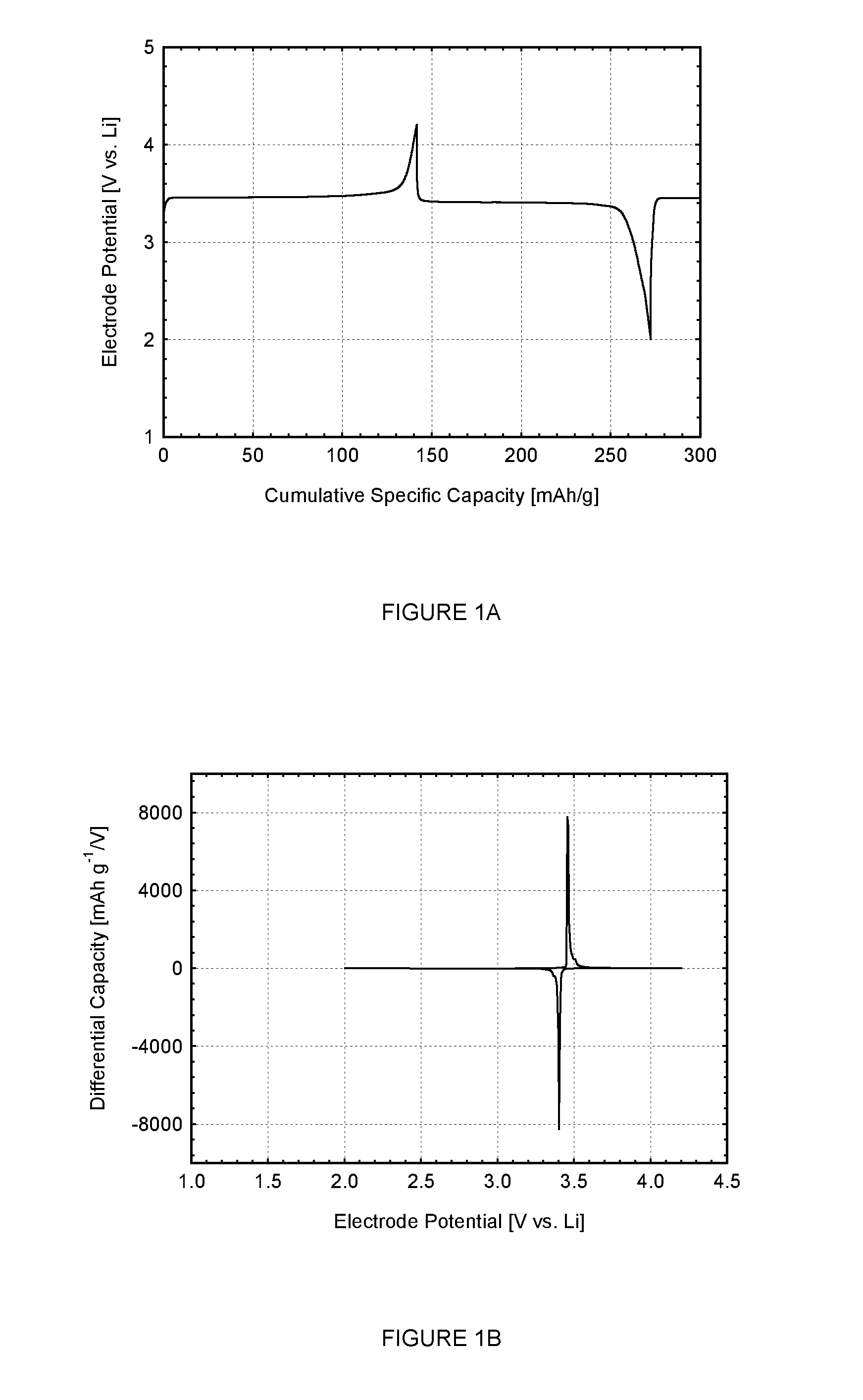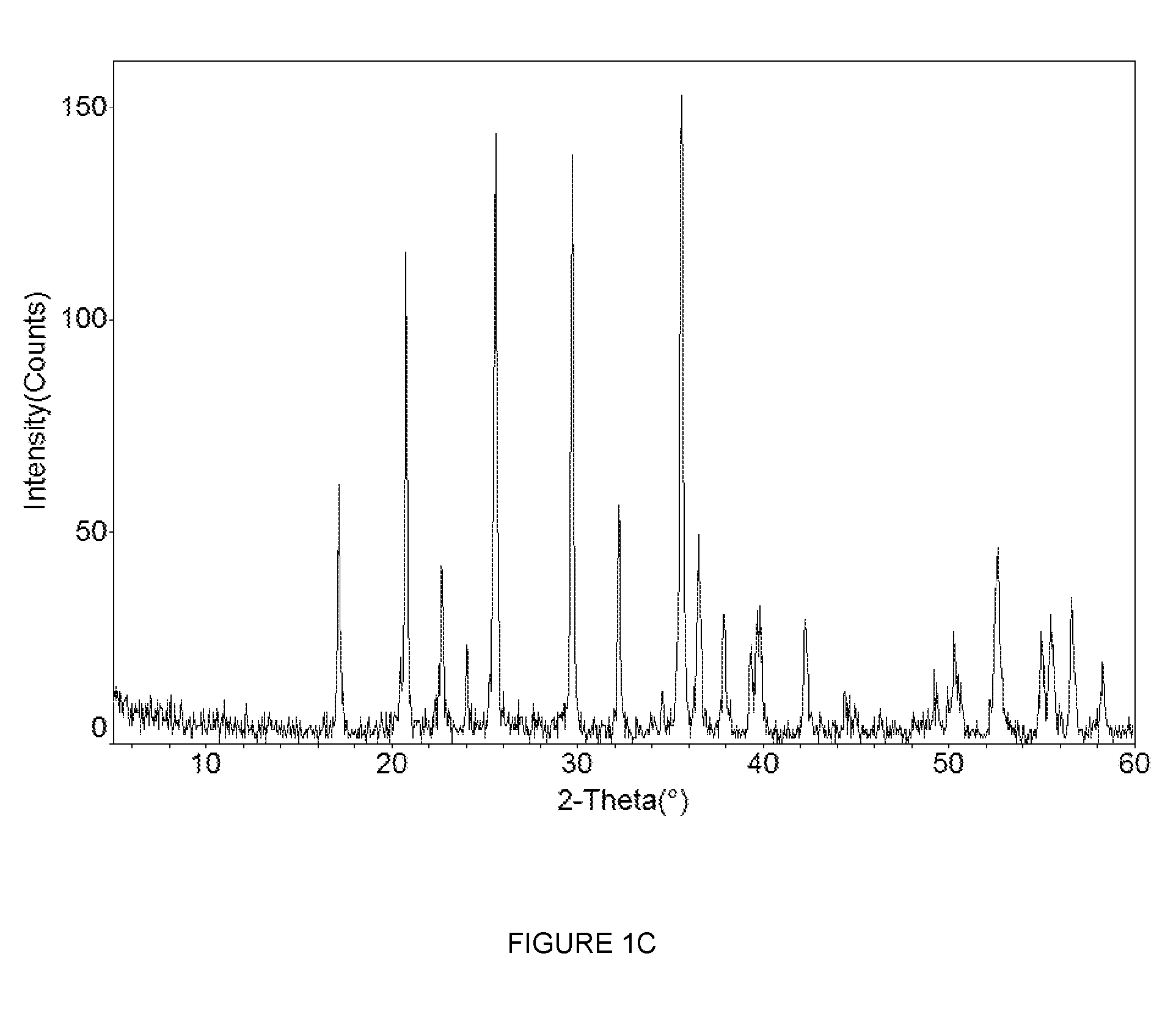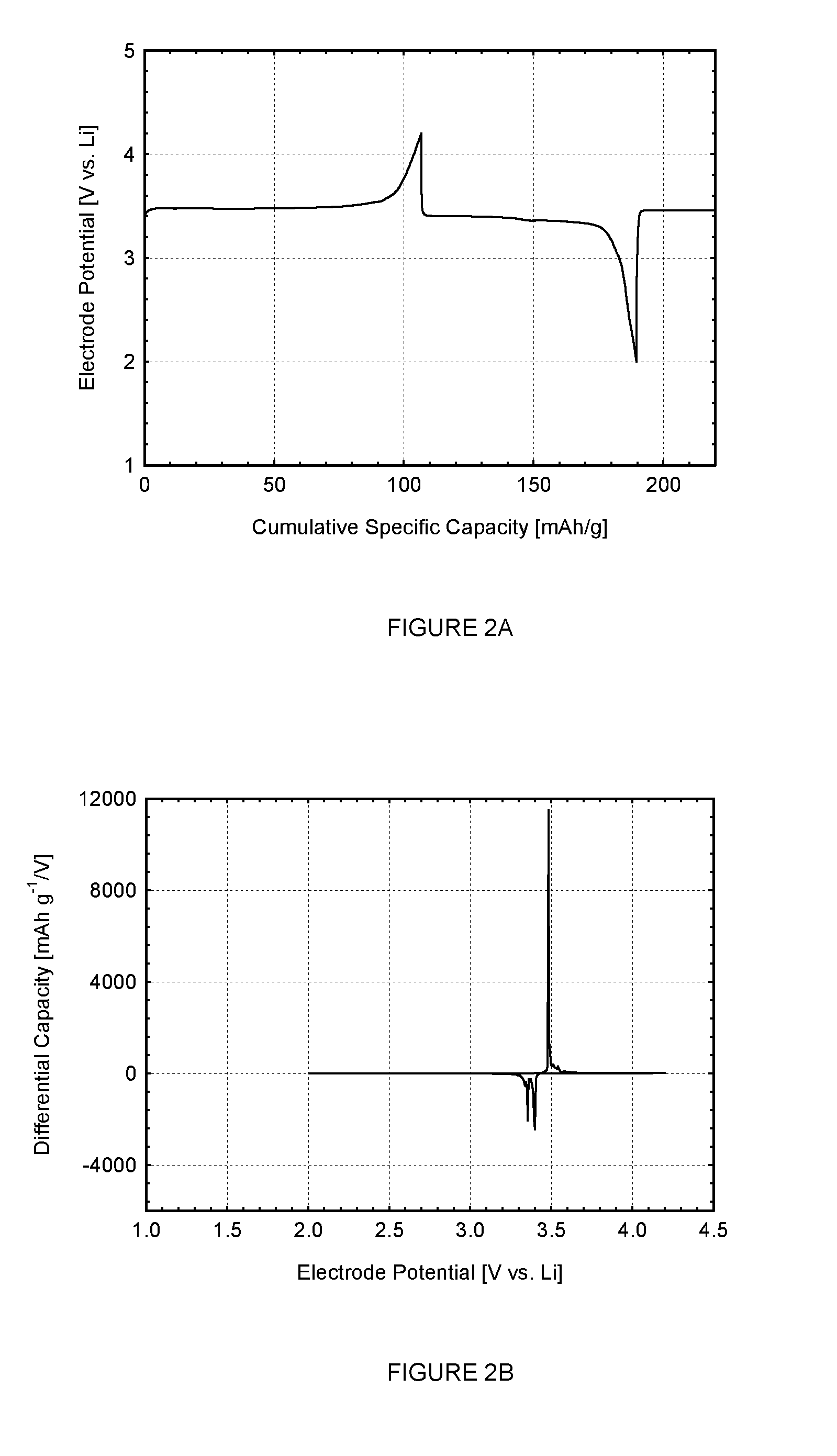Metal-containing compounds
a technology of metal-containing compounds and compounds, which is applied in the field of metal-containing compounds, can solve the problems of commercial unattractiveness, ineffective reducing agents, and non-hydrophosphite-containing materials
- Summary
- Abstract
- Description
- Claims
- Application Information
AI Technical Summary
Benefits of technology
Problems solved by technology
Method used
Image
Examples
example 1
[0186]FIGS. 1A and 1B (Cell#205010) show the first cycle constant current data for the LiFePO4 cathode active material (X0499, made using the reducing agent, ammonium hypophosphite, NH4H2PO2) measured in a metallic lithium half-cell. The reaction mixture also had carbon included as a conductive additive. FIG. 1A shows the voltage profile (electrode potential versus cumulative specific capacity) and FIG. 1B shows the differential capacity profile (differential capacity versus electrode potential). The constant current data shown in the figure were collected using a lithium metal counter electrode at a current density of 0.04 mA / cm2 between voltage limits of 2.0 and 4.2 V. The non-aqueous electrolyte used was a 1 M solution of LiPF6 in a 1:1 mixture of ethylene carbonate (EC) and diethyl carbonate (DEC). The electrochemical testing was carried out at a controlled temperature of 25° C.
[0187]The Open Circuit Voltage (OCV) of the as-made cell was 3.113 V vs. Li. Referring to FIG. 1A, dur...
example 2
[0189]FIGS. 2A and 2B (Cell#205011) show the first cycle constant current data for the LiFePO4 cathode active material (X0500, made using the reducing agent, ammonium hypophosphite, NH4H2PO2) measured in a metallic lithium half-cell. FIG. 2A shows the voltage profile (electrode potential versus cumulative specific capacity) and FIG. 2B shows the differential capacity profile (differential capacity versus electrode potential). The constant current data shown in the figure were collected using a lithium metal counter electrode at a current density of 0.04 mA / cm2 between voltage limits of 2.0 and 4.2 V. The non-aqueous electrolyte used was a 1 M solution of LiPF6 in a 1:1 mixture of ethylene carbonate (EC) and diethyl carbonate (DEC). The electrochemical testing was carried out at a controlled temperature of 25° C.
[0190]The Open Circuit Voltage (OCV) of the as-made cell was 3.029 V vs. Li. Referring to FIG. 2A, during the first lithium extraction process, a charge equivalent to a mater...
example 3
[0192]FIGS. 3A and 3B (Cell#207046) show the first cycle constant current data for the LiFePO4 cathode active material (X0638, made using the reducing agent, hypophosphorous acid H3PO2) measured in a metallic lithium half-cell. FIG. 3A shows the voltage profile (electrode potential versus cumulative specific capacity) and
[0193]FIG. 3B shows the differential capacity profile (differential capacity versus electrode potential). The constant current data shown in the figure were collected using a lithium metal counter electrode at a current density of 0.04 mA / cm2 between voltage limits of 2.5 and 4.2 V. The non-aqueous electrolyte used was a 1 M solution of LiPF6 in a 1:1 mixture of ethylene carbonate (EC) and diethyl carbonate (DEC). The electrochemical testing was carried out at a controlled temperature of 25° C.
[0194]The Open Circuit Voltage (OCV) of the as-made cell was 3.287 V vs. Li. Referring to FIG. 3A, during the first lithium extraction process, a charge equivalent to a materi...
PUM
| Property | Measurement | Unit |
|---|---|---|
| temperature | aaaaa | aaaaa |
| temperature | aaaaa | aaaaa |
| conductive | aaaaa | aaaaa |
Abstract
Description
Claims
Application Information
 Login to View More
Login to View More - R&D
- Intellectual Property
- Life Sciences
- Materials
- Tech Scout
- Unparalleled Data Quality
- Higher Quality Content
- 60% Fewer Hallucinations
Browse by: Latest US Patents, China's latest patents, Technical Efficacy Thesaurus, Application Domain, Technology Topic, Popular Technical Reports.
© 2025 PatSnap. All rights reserved.Legal|Privacy policy|Modern Slavery Act Transparency Statement|Sitemap|About US| Contact US: help@patsnap.com



